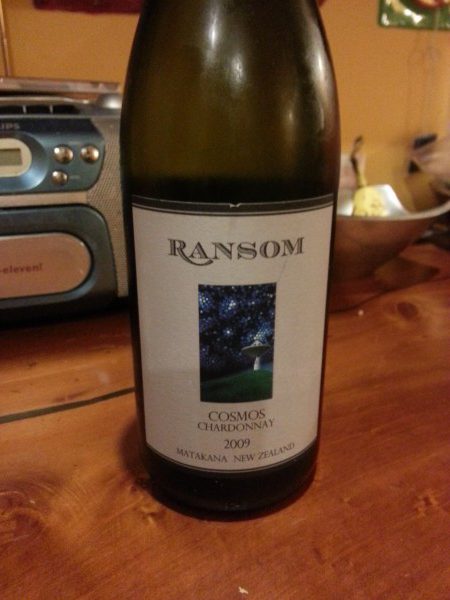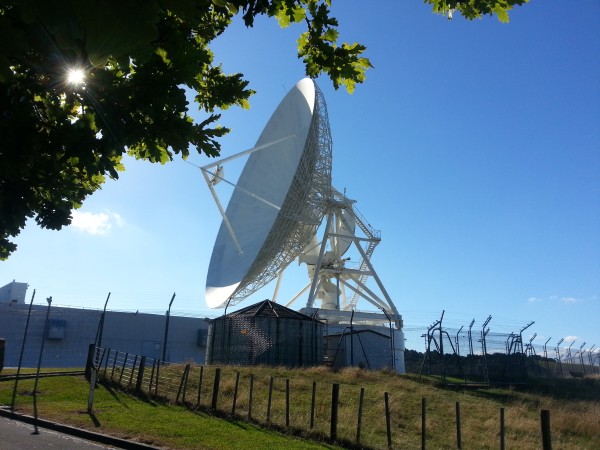Computing for SKA – Some thoughts
It’s Friday 13th February and I’m in Auckland. Coincidence?
My purpose was to attend and talk at the “Computing for Square Kilometre Array” conference held at Auckland University of Technology – AUT. Despite such an inauspicious date, I also got to visit my first radio telescope and drink some very nice wine.

The Square Kilometre Array is set to become mankind’s largest science project ever, knocking CERN’s Large Hadron Collider off that spot. It’s a radio astronomy project. The idea is to build an array of thousands of radio telescopes across Western Australia and South (and Southern) Africa.
These telescopes will collect data. Lots of it. More than we can imagine, cope with, process, transfer or store. This makes it one of the most exciting computing and infrastructure projects for a long time. Catalyst and Open Parallel and others have been contributing to the NZ SKA Alliance work streams which are defining the software stack for parts of this project. It’s not a big contribution in the grand scheme of things but because of our familiarity with Open Source, software defined infrastructure and OpenStack in particular we are making a useful contribution.
My presentation however focused on the importance of keeping the SKA an “open” project. Fortunately, that is a core philosophy of the project.
The purpose was to confirm and strengthen SKA’s commitment to open research and open source. To illustrate the experience of economic / business impact of such an approach, based on other massive, public funded, scientific endeavours.
I wanted to provide a real life case study of a business that has benefited hugely from the openness of these sort of projects and that has also contributed back, in many ways, to those projects.
Here are my speaking notes.
Catalyst and the SKA
Who am I? Don Christie – a director of Catalyst. The largest dedicated FLOSS companies in NZ, Australia and beyond.
Our involvement in SKA – on the grand scale of things, we are Earth in the universe. But to us Earth seems like an important place. We have been part of the initiatives to help design the SKA software stacks, for both SDP and CSP. Lead by AUT, Open Parallel, worked alongside Alex St John, Rob O’Brian. We also provided former CERN engineer to contribute.

First, let me take you back a year…
New Zealand Productivity Commission’s Take on Cloud Computing
February 2014. NZ Productivity Commission published an interim report stating, amongst other things, that cloud computing only worked at massive scale and that value and cost structures were only feasible at this scale. NZ could not hope to have facilities to compete at this scale therefore it was imperative that the NZ Govt and industry moved to overseas cloud.
This was quite upsetting to me. Our company had just taken on a data centre and were about to launch the NZ cloud, at comparatively small scale, but with a cost structure that was at worst competitive with AWS and others and at best more competitive. And here with this little QUANGO telling the world that what we had achieved couldn’t be done. Not a great launch story.
But we keep progressing. Our business model is constantly driving down costs whilst pushing innovation hard. We are able to keep competing in a rapidly changing market place.
Since then we have been able to blow away the ProdComm economic theory and proven something very different in practice. How and why were we able to achieve this?
The OpenStack Story
A key platform that has been identified for part of the software stack for SKA is a series of projects that fall under the umbrella label, OpenStack. It’s quite hard to believe that what is now one of the most successful and largest open source projects ever only started in 2010. It was a collaboration between Rackspace and NASA (Catalyst became involved round about 2012).
The first “community” release, Austin, appeared November 2010. Ubuntu (Canonical) were a very early backer as were Red Hat and HP.
CERN’s Large Hadron Collider project has adopted OpenStack for its cloud and in collaboration with others, is making significant contributions. They have about 150,000 cores.
Through initiatives such as Keystone and Glance, CERN has contributed a federated cloud system that currently works across CERN’s cloud and the public cloud resources by Rackspace, whose cloud is also built on OpenStack. Users can deploy federated identity across Rackspace cloud and CERN’s private cloud.
CERN has a similar goal to SKA regarding the economic impact of research funding. It has to be open and it has to be available to all for re-use. They also benefit hugely from this openness. In many ways, CERN has taken over the big open science mantle from NASA as far as the OpenStack project goes.
Catalyst’s Journey with OpenStack
OpenStack, pure, forms Catalyst’s New Zealand cloud.
We kicked off an R&D project in 2012 with the goal of building a cloud based completely on open source software in NZ. It also had to be on commodity hardware. Netapp, EMC et al were out. VMWare was out. The reasons were ethical (it’s our business) and financial. The proprietary stuff is just too expensive and comes with way too much lock in.
We needed to be able to build, maintain, upgrade, develop, contribute – fast. Technologies like Ceph were, initially, unproven. We set out to prove them.
We tested and tested. We built billing systems. We improved storage – thanks to a CERN engineer who decided to have an 18 month sabbatical with us in NZ – and we contribute upstream, continuously.
This cloud also had to work at NZ scale. Our Catalyst Cloud can have up to 15,000 cores. A 10th of CERN’s. That’s still 1 million small websites…Worth just under $50 million / year at capacity. But consider this, given the physical infrastructure, we can now build 10 of these within weeks.
We also shared and contributed some of this expertise with the SKA project. We continue to do so. Some of you were present last year for Ricardo Rocha’s talk on cost effective storage solutions. These have become even more cost effective thanks to our work and advances in Ceph technology.
Today we have a sophisticated, fully automated, extremely competitive open source cloud. This is a first for NZ and we have local first mover advantage.
Thanks to NASA. Thanks to CERN.
SKA and the Cloud
OpenStack and SDI (software defined infrastructure) in general, has been identified as an important component in the solution to the puzzle about coping with exescale science. The only way SKA can be affordable and successful is to build on open and free technologies. These sorts of platforms are not exclusive, they allow the masses to participate in your dream without the need for huge infrastructure investment. We can scale down, and up and across. Federate in very interesting and dynamic ways.
But whether or not OpenStack becomes an important part of of SKA or just an interesting side show is not the issue.
OpenStack Paris
I went to the 6 monthly OpenStack conference in Paris in November 2014. 6000 mostly developers attended this 5 day event. That’s 25% more than the 4,500 attendees at the previous event in the USA, 6 months earlier.
Dozens of start ups exhibited at that conference from across the globe. All offering a variety of OpenStack based or inspired products an services. Alongside them were the likes of Red Hat, Canonical, HP, Cisco, Netapp, EMC and so on. This growing and thriving economic value is the direct result of a decision by NASA to open the results of their research and development.
Be open all the time. Don’t get side stracked
I commend the SKA for taking a similar view and suggest that, in order to convince your tax payer paymasters, that you accelerate collaboration and openness and ensure it is the at the core of all your decision making. You are faced with choices every day, easy is not sustainable or scalable for you, nor is short term. Don’t make the same mistake CERN tells me they made, locking themselves into closed solutions for the sake of short term convenience. Unpicking those decisions when it became apparent that the cost model doesn’t scale has been time consuming and frustrating.
I want NZ’s next $billion venture to be the result of further fruitful engagements with AUT, the NZ SKA Alliance and the wider SKA project as a whole.
Finally, I want our government to understand that the Walmartisation of our economy is a dead end model for the future, and that it is projects such as the SKA that offer a once in a lifetime opportunity to lift our capabilities and economies in ways that politicians always talk about…but rarely deliver upon.

